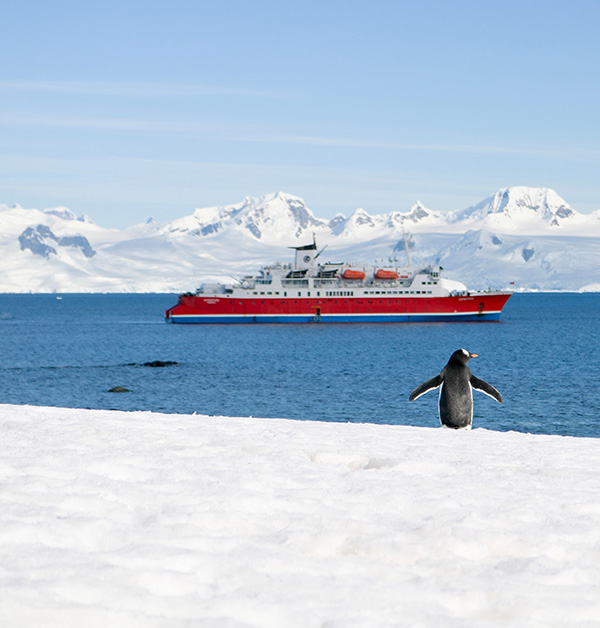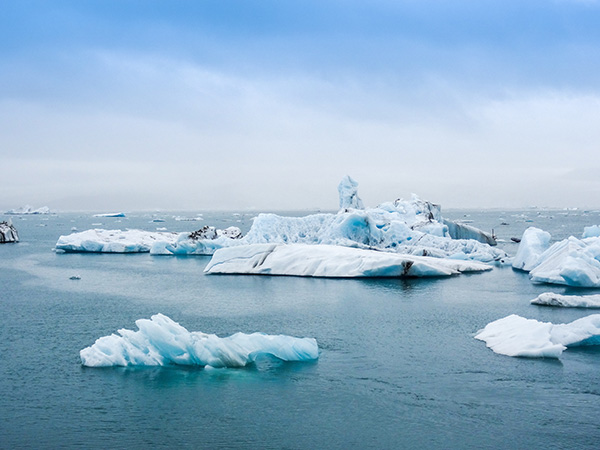Environment
Calling all ships - Reduce emissions!

Ships are responsible for more than 18 percent of some types of air pollutants. Reducing such emissions is a crucial step in the battle against global climate change. The International Maritime Organization (IMO) and others have estimated that carbon dioxide emissions from shipping were equal to 2.5 percent of the global human-made emissions in 2019. They are expected to rise by 50 to 250 percent before the year 2050 if no action is taken.
Adverse effects of climate change
include flooding, severe storms,
melting of permafrost and polar ice, and
extreme temperatures that make large
regions of the world uninhabitable. Solutions
are needed without delay.
On the sidelines of the United
Nations climate conference in Glasgow in
late 2021, emissions from transportation
and traffic were discussed by a number
of nations – even though such emissions
were strictly speaking not on the official
agenda. The International Energy Agency
has estimated that transportation is one
of the most significant sources of greenhouse
gas emissions.
Among other countries, Finland
pledges to reduce traffic-based emissions
in land, sea, and air transports. Representatives
of the Finnish government noted
after the conference that the Glasgow declarations
will affirm Finland’s role as a hightechnology
country developing climatefriendly
transport solutions. New strategies
for implementing coal-free maritime transports
were deemed particularly important
and urgent.
Coal-Free Shipping
One example of the Glasgow conference
initiatives for reducing ship emissions is
the Clydebank declaration. It encourages
countries to develop coal-free routes for
maritime transports, in order to set an
example for the rest of the world.
The declaration supports IMO’s
actions for reducing ship emissions and
strives to demonstrate that certain shipping
routes can actually be operated with
coal-free fuels, as early as in the next few
years.
Although Finland yet has no such
coal-free shipping routes, Finnish ships
are increasingly being powered by biofuels
or by various hybrid – partially electric
– powering solutions. Furthermore,
Finland’s numerous short-range coastal or
ferry routes could have potential for pilot projects for electrically-powered vessels in
the near future.
Additionally, Finland is participating
in Denmark’s initiative that aims to implement
totally greenhouse-gas-free sea
transports by the year 2050.

Low Emission – Limited Pollution
In some estimates, maritime transport
emits approximately 940 million tons of
carbon dioxide emissions annually. Fifteen
of the largest mega-ships alone cause as
much air pollution as 760 million cars.
International shipping is responsible for
87 percent of CO2 emissions in shipping.
Emissions from shipping mainly
include sulphur dioxides (SOx), nitrogen
dioxides (NOx), particular matter (PM) and
carbon dioxide (CO2). Additionally, pollution
of seas can be caused by ballast water,
waste, plus oil and chemical spills.
Statistically, ships from three flag
states – Panama, China and Liberia – are
causing the largest CO2 emissions in shipping:
35 percent of the total for all three
combined.
Luckily, there is significant potential
to reduce shipping emissions cost-effectively.
This can be obtained by both technical
and operational measures.
The International Maritime Organization
is taking steps to reduce greenhouse gas emissions from international shipping.
For one thing, sulphur content in shipping
fuels is limited to less than 0.5 percent.
As to operational measures, reduction
of speed and route optimisation
would reduce fuel consumption considerably.
By reducing average speeds by 12
percent, daily fuel consumption could be
decreased by some 27 percent. Weatherbased
route optimisation in shipping can
result in further fuel savings of some
3 percent.
Technical measures can also reduce
emissions. Possible solutions include propeller
optimisation, heat recovery systems,
hull designs, and emission filtering.
LNG-Fuelled Cruise Ships
Coal-free powering of vessels is one solution.
Innovations in battery technologies
are gradually paving way for electrically
powered ships, at least for short-range
routes. Wind-assist systems are also possible
and are already in use aboard some
cruise ships.
Today’s environmentally-friendly fuel
solutions include LNG (liquefied natural
gas) that is already being utilised, even for
powering very large cruise ships.
LNG is a practical solution e.g. around
the Baltic Sea region where IMO’s environmental
regulations have in recent years
become very strict. For LNG-fuelled ships,
coastal LNG terminals are needed. Such
terminals already exist in various countries.
Some cruise ships have dual-fuel systems:
while the main fuel of the ship is
LNG, the engines may also be able to utilise
MGO gas oil or other substitute fuel.
Running on LNG, this type of vessel has virtually
no SOx emissions and its NOx emissions
remain well below IMO regulation
levels. The particular-matter and CO2 emissions
should also remain on low levels.
Future environmentally-friendly fuel
options for ships will also include ammonia
and hydrogen fuels.

New Technologies and Innovations
A number of hi-tech innovations that support
emission-reduction goals have already
been developed by Finnish engineers. For
instance, Wärtsilä – known for its ship
engines and power plants – is in the process
of designing new types of environmentally-
friendly engines.
A ship engine running on ammonia-
based fuel is about to be launched to
the market. Ammonia consists of nitrogen
and hydrogen. Burning ammonia will not
release CO2 into the atmosphere.
Another ship engine concept utilising
pure ammonia fuel is scheduled to be
complete in 2023, while ship engines running
on pure hydrogen are expected to be
launched by 2025.
Two other Finnish companies, Flexens
and Elomatic, are now cooperating to
presently produce hydrogen and synthetic
fuels in Naantali, especially for the maritime
fuel markets.
Furthermore, VTT SenseWay has
researched into reducing emissions of
cruise ships in particular. Approximately
one third of the fuel consumption of cruise
ships is caused by passenger cabins – the
second-largest energy consumption figure,
right after propulsion. When a cruise ship
is docked, energy consumption of passenger
cabins rises to first position.
VTT SenseWay’s intelligent sensor
device can be used to limit energy consumption
in empty cabins and other areas
where there are no passengers present.
This matchbox-sized device can be utilised
for energy optimisation, but it also can also
yield an overview of the locations of passengers,
thus assisting rescue work in fire
emergencies or other high-risk situations.
The device can be integrated into the
ship’s various automation systems. Pilot
projects have been scheduled to start in
early 2022.
Text by: Ari Mononen
Photos by: Unsplash and Pexels



